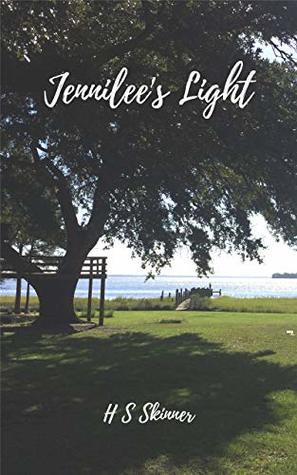Rachel Neumeier's Blog, page 208
January 18, 2019
Rendering accents in dialogue
At Kill Zone Blog: Rendering dialects and accents.
But what if you do want the character to have a heavy accent? Be clever about it. Give the reader an indication of the speech pattern the first time the character speaks, then use a few sprinkles of it every now and then as a reminder.
For instance, you can do a dialect-heavy first line and then pull it back in subsequent lines. Liz Curtis Higgs does this in Thorn in My Heart, a novel set in 18th century Scotland. A local shepherd greets a lost horseman with:
“D’ye ken whaur ye’re goin’, lad?”
You have to look that over a couple of times, but that’s what Higgs wants you to do. The heavy brogue is now implanted in our minds. After that she keeps the odd spellings to a minimum.
Good suggestion: start heavy, then go light.
Other good suggestions in the post.
Word choice is obviously another way of indicating accents without messing with the spelling — the post refers to that as well — or, in secondary world fantasy, with clarifying to the reader that different characters come from different cultures or different linguistic backgrounds, or both.
I was startled recently to discover that my brother, when he read my recent WIP (Tuyo, the obsessive one, if you’re curious), didn’t notice that the main protagonist never uses contractions no matter what language he’s speaking, or that no one uses contractions when speaking taksu. Only native speakers of darau use contractions, and only in their own language. Taksu obviously just does not include the option.
Word choices and sentence structure are also different for the two languages. I have faith that the reader will feel the difference, even if he or she doesn’t consciously notice them. That’s another way to handle linguistic variation, without having to mess around with spelling at all.
Please Feel Free to Share:









And for something completely different
Here at Terrible Minds, we have Chuck Wendig ranking apples. Not even heirloom apples, but ordinary apples you might well find in your local grocery store.
But hey, it’s a fun post.
Now we’re getting somewhere. I really liked the Opal. Very, very crisp apple with this incredibly breaking texture that called to mind the feeling of using your teeth to break off a piece of good dark chocolate. Strong scent of pear-pineapple which is met by an equally fruity flavor profile. Also in times of great need, Opal turns into a Mighty Apple Princess and will fight on your behalf, for your honor, for the Kingdom of Fruitonia. True story, don’t @ me.
Spoiler: the apple he puts right at the top is Pink Lady. I mention this because:
a) my crisper drawers are currently jam-packed with Pink Lady apples, though just this week I managed to eat the last of the Pink Ladies that were overflow, so at least all the remaining apples are actually in the crisper drawers. Now just lettuce and spinach and scallions and cabbage are dotted on random shelves of the fridge. Progress!
b) Pink Lady is hands down my best apple tree. It produces well, every single year. The fruits are medium-smallish, but not a bad size. They often have a little blemish or two, but they’re not too bad about that kind of thing. They store very, very well in the fridge and adequately at cool room temperature.
c) They taste much better a month after picking than they do right off the tree.
d) They taste waaaaay better off the tree than they do out of the store, though the difference is actually not as extreme as for a few other varieties, including, for example, Fuji. For me, Fuji apples from the store are much too sweet and single-note. A Fuji apple right off the tree is so much better there is just no comparison. On the other hand, the tree is not very productive and the apples it produces are quite damage-prone.
e) After more than a decade of dealing with fruit trees, I definitely think apples are dramatically easier in MO, and therefore probably in similar states, than any stone fruit. I’m just saying. One more tidbit of unreality in fantasy novels is that in the real world, you can absolutely lose the whole peach crop to brown rot. Never heard a complaint about diseases and pests hitting fruit in a novel, even the ones where fruit trees make an appearance.
Please Feel Free to Share:









January 17, 2019
Oh, hey, good news from Bujold
Here’s a tor.com column by Alan Brown about LMB’s Sharing Knife series.
The column is fine, though Beguilement is certainly not my favorite in the four-book series (and may not be Brown’s favorite either, but he sure liked it a whole bunch.)
But here’s the important bit:
A few weeks ago, on Christmas Day, Bujold announced on her blog that “I am pleased to report that I have finished the first draft of a new novella in the world of The Sharing Knife. Functionally a novella, anyway; its length, at the moment, is a tad over 49,000 words, so it’s technically a short novel.”
I would not personally call 49,000 words any kind of novel (and I don’t think LMB really would either, or she wouldn’t have said “technically.” No matter where the technical lines are drawn, 49,000 words is a novella. On the other hand, I will be right there for a Sharing Knife novella, especially if it is set after the four books, because in my opinion this series got decidedly better as it went on.
Best line in the whole series: “No one said anything about giant bats!”
Anyway:
a) Beguilement — a nice story, a sweet romance, I liked it a lot. This book immediately became a comfort read, one I reach again for if I have a bad cold and don’t feel like reading anything challenging, but need a warm, fuzzy novel that I know well and still enjoy.
b) Legacy — I wasn’t a huuuuge fan of Fawn’s family, but I loathed Dag’s toxic family. Some parts of this book are just painful to read. I still like the book okay, but.
c) Passage — Now we’re talking! Fun slice-of-life river trip, interrupted by the occasional need to deal with some minor (or major) crisis.
d) Horizon — I really like seeing Dag get his life actually in order, make those big, important decisions about what direction he’s going to take. I liked Arkady, I liked Dag’s niece, whose name I’m temporarily forgetting; I liked the whole book a ton. Plus giant bats!
The new novella is apparently going to be called Knife Children.
There is zero information about it so far at Goodreads, just the cover and a publication date of Any Minute Now; ie, it says January 2019, but the story is not up at Amazon yet.
Please Feel Free to Share:









January 16, 2019
More than you may want to know about the evolution of feathers
New discovery pushes origin of feathers back by 70 million years
In a new work published today in the journal Nature Ecology & Evolution, a team from Nanjing, Bristol, Cork, Beijing, Dublin, and Hong Kong show that pterosaurs had at least four types of feathers:
– simple filaments (‘hairs’)
– bundles of filaments
– filaments with a tuft halfway down
– down feathers.
“We focused on clear areas where the feathers did not overlap and where we could see their structure clearly. They even show fine details of melanosomes, which may have given the fluffy feathers a ginger colour. … we couldn’t find any anatomical evidence that the four pycnofibre types are in any way different from the feathers of birds and dinosaurs. Therefore, because they are the same, they must share an evolutionary origin, and that was about 250 million years ago, long before the origin of birds.”
I was taught that pterosaurs probably had fur, not feathers. Nope. Very snazzy revision to our understanding of the early evolution of feathers.
Please Feel Free to Share:









January 15, 2019
Five animals that prove animal encyclopedias are written by practical jokers
Recently I have concluded that many animals probably do not really exist. They are simply images created to see how much weirdness people will swallow. For example, the maned wolf:
 Do You Really Think This Exists?
Do You Really Think This Exists?You remember the Killer Rabbit of Caerbannog? Well, then, come on, you just know some Monty Python fan probably made up this little antelope:
 As If
As IfAnd while we’re on the subject of unbelievable teeth, there’s this:
 Seriously?
Seriously?Yes, the upper teeth grow right up through the snout, piercing the skin. See how they curve back? Yes, they can actually keep growing and pierce the skull. No, it’s not clear why tusks like this would be a good idea. Did evolution do this, or are the animals absolutely fictional?
And how about this?
 Oh, Come On
Oh, Come OnIf this animal appeared in a fantasy movie, you’d know it was a (pretty bad) special effect. Why believe in them just because you’re told that no, really, they exist? Suuuure. Have YOU ever seen a saiga antelope? Well, then.
The Uakari is even more obviously fictional:
 Really a Captain America Villain
Really a Captain America VillainGot a favorite “fictional animal?” Drop it in the comments …
Please Feel Free to Share:









Well, this is charming
I saw this via File 770:
The Fellowship of the Ring Finders
A man takes off his baseball glove in Central Park. His wedding ring slips off undetected and disappears into the grass. Hours pass before he notices that it’s missing.
A woman reacts in a fit of anger, tossing her engagement ring into the ocean. As it hits the water, pangs of regret settle in.
A tourist visiting Canada removes five sentimental rings to sanitize her hands while in a rental car. Later, when she steps out, they are sent sprawling into the snow, and she doesn’t realize they’re gone until she’s on the flight back home. …
Usually, stories of this variety almost always end in tears. Yet these three people found their lost rings, frantically Googling some iteration of I lost my wedding ring and stumbling upon a network of metal detectorists who help people locate their misplaced jewelry. They had found their way to the Ring Finders , a service that pairs these people with one of 430 sleuths stationed around the world.
Isn’t that delightful? Aren’t you happy a service like this exists? Someone had an idea for a new kind of business that does something nice for people who otherwise have no recourse. Some ring finders concentrate on requests that offer a reward, some do it for free, and the middleman website that connects those who lose rings with those who find them stays in business by charging finders a rather modest annual membership fee.
One reason the metal detectorists have such a surprisingly good track record is that, through practice, they’ve honed a strategy on how to find rings. “If I can’t find them, I’m not sure that they are where they think they are,” says Mike Fish, a ring hunter who lives in Anchorage, Alaska. The 71-year-old retired firefighter does request a small fee—chocolate-chip cookies.
Charming.
Also, I bet if people contacted this service and said please help me find my car keys, they could get someone to help with items beyond rings. I’m thinking of a friend who lost her keys at my place. We all searched and searched and I wound up loaning her my car until she could get another key (she lives an hour and a half away, so she really needed a car to get home).
Please Feel Free to Share:









January 14, 2019
Abandoned Earths
At tor.com, James Davis Nicholl has this post: SF stories featuring abandoned Earths.
This is not a plot device I especially enjoy, but I do really like this sentence from the post:
A few authors go that extra 1.6 kilometers and obliterate the Earth entirely. Wil McCarthy’s Queendom of Sol setting imagines a communications system with a failure mode that can and does turn the Earth into a small black hole. Nothing encourages the settlement of other worlds quite like having your old one reduced to the size of a marble.
Yep, that’s what I always say.
I have read exactly one of the books mentioned in this post: John Varley’s Ophiuchi Hotline, where aliens destroyed human technology in order to make the planet safe for whales and dolphins, thus forcing the few remaining human survivors to live on other planets.
Another book I can think of where Earth was abandoned or destroyed was Seveneves, though in that one, of course, humans did not abandon the planet so much as die out (nearly). Plus they did return to Earth in due course.
One more: Octavia E Butler’s Oankali series. Kind of like combining the two above: Earth is rendered uninhabitable first, then aliens … do stuff.
Please Feel Free to Share:









January 13, 2019
Recent Reading: Jennilee’s Light by H S Skinner
Okay, this book is enough of a departure for me that it’s
going to be hard for me to write a review. I’ll provide the conclusion first: I
really, really liked it. A lot.
Now, let me see, where to actually start.
Okay, first, a mild disclaimer: I don’t know the author
personally, but I do know via Facebook that that she likes my books. If you
happen to be working on your debut novel yourself, then let me say: I won’t
deliberately trade reviews or anything, but I will feel, if you love my books, your literary taste probably
matches mine in some important ways, so if your book comes to my attention, I
may read it no matter what genre it falls into. I’ll hope to love it. If I do,
I’ll say so, while if I don’t, I’ll never mention that.
Now, Jennilee’s Light.

What is this novel?
What genre? I sorta kinda skimmed the Amazon description, which for me fell
solidly into tl;dr territory. I didn’t care that much about the description; I
was trying the book purely based on the author liking mine. I believe a
shorter, pithier description is generally better than one as long and involved
as this. I probably read about three sentences of the Amazon description,
shrugged, and tossed the book on my Kindle.
Now that I’ve read the whole novel, let me try to describe
it. I believe the easiest way is to start by telling you what it isn’t.
It starts with a murder in the way lots of murder mysteries
do, but it’s not a murder mystery, though the mystery is threaded through the
story. It begins in 1968 and stretches out over the next sixteen years or so;
that’s not long enough ago to count as a historical, but too long ago to count
as exactly contemporary. The heart of the story is an extremely intense
relationship that in due course becomes an intense romance, but the book doesn’t
follow the customary beats for a romance novel. There is a small fantasy
element, but not enough to set the story in the fantasy genre. Only the one
fantasy element, which is only noticed by a few characters, so probably not
magical realism. It’s not a fairy tale retelling, but Cinderella will probably
come forcefully to mind if you read it. Some aspects of the story would almost certainly
appeal to readers of Christian literature, but there are almost no specific
references to religion, other than people celebrating Christmas from time to
time. What is that, seven genres this story sort of but doesn’t quite fit?
I’m going with . . . bright literary. Can I use that term,
bright? Does that work? I mean, upbeat literary. Well, I don’t mean upbeat in the
sense of perky. Perhaps I should say, optimistic literary. Hmm. Of these types
of terms, I believe I do like “bright literary” best. This is a story about,
well, a lot of things, but its essence is a single relationship shown in slice-of-life,
over a sixteen-year span, in a contemporary-ish setting. That strikes me as
pretty literary. But so much literary has such negative, even nihilistic
subtext. I’m thinking of The Lacuna
by Kingsolver, if you want to know where I’m coming from when I say that. The
underlying message of that one struck me as, essentially, “You just can’t win
against the forces of human ignorance and bigotry.” The basic underlying
subtext of Jennilee’s Light is “You absolutely
can.”
Let me see. I said the description on Amazon struck me as
much too long. Let me try to give you a short, pithy version.
After her mother is murdered
when she is four years old, Jennilee is raised by an aunt who hates her. Her
refuge is her relationship with Charlie, also orphaned, and with Charlie’s
grandmother. Charlie is Jennilee’s champion and protector. More than that, he
is her light and her hope of happiness. Both know they are destined to grow up
together, that one day they will marry, that they are meant to live happily
ever after . . . unless Jennilee’s aunt can ruin their chance for joy and destroy
their lives.
Something like that pretty well evokes the novel, I think. It’s
not entirely accurate – Charlie is not literally an orphan – but it’s essentially true.
The soulmate thing is a very, very strong element in the
story. Ordinarily I think that would have struck me as too over the top, but
there are a lot of over-the-top elements here and somehow they work. Jennilee
is way too good to be true; so is Charlie. But the author isn’t making the
slightest attempt to pretend they’re ordinary kids or ordinary teens or ordinary
young adults. She is deliberately pouring a golden glow over them both, and
everyone around them reacts to that glow. I found it remarkably easy to just
relax and go with it.
Almost all of the story is slow-paced (slice-of-life,
remember). Half the book, roughly, takes place before Jennilee’s eighteenth birthday,
when she becomes legally free of her aunt. I want to tell you, the scene when
Jennilee turns eighteen and shakes the dust of her aunt’s house off her feet is
stellar. After the slow build, watching
Jennilee and Charlie walk together into joy while the evil aunt crashes into thoroughly
deserved disaster is enormously satisfying. However, though this novel is
self-contained, threads do reach forward into the future, suggesting a possible
sequel.
Who would like this novel:
I don’t quite know what to tell you, since the novel is so unusual compared to most of the fiction I read. If the above makes you think you might enjoy this book, by all means give it a try; it’s only $2.99 for the Kindle version, so why not? But I do think:
You might love this book if you like slice-of-life stories, but find modern literature too dreary.
You might love this book if you enjoyed Dean Koontz’s Odd Thomas series, but would prefer less mayhem and death, or fewer specifically religious underpinnings, or both.
Oh, here’s one I think works: if you love Rumer Godden, sure, try this book. It’s not the same, but you may well love it.
You know what, if you loved Little Women, give this one a try. That just occurred to me, but I
think it’s true.
And, specifically, I hope Linda S. tries this one and lets
me know what she thinks.
Please Feel Free to Share:









January 11, 2019
Your home office envisioned as pelagic zones
This is a delightful extended metaphor from The Passive Guy:
As PG performed a tidiness assessment, he realized there are varying zones of tidiness represented in his office. In that respect, PG’s lair represents a creation akin to the layers of an ocean. …
The entry to PG’s office is equivalent to Epipelagic or Sunlight Zone.
As one continues horizontally into the office, one passes through the Bathypelagic (Twilight) Zone and Abyssopelagic Zone (The Abyss). Finally, when the office diver reaches PG’s desk, he/she is fully-immersed in the Hadalpelagic Zone (The Trenches).
As he considered the potential impact of a tidying-up event on his office, PG realized that it would create an ecological disaster of immense proportions.
Love it!
Also, these comments are in response to a post by Jen Sherman at Book Riot, disagreeing with a notion that one should tidy up one’s house by discarding the TBR pile in its entirety and also, I guess, the entire library.
What is it about books that I disagree with? Kondo suggests that the books that you keep to be read eventually will actually never be read, and that the moment you first encounter a book is the moment to read it. If you don’t read it then, you are not going to, so it can be discarded.
She also argues that you are going to reread very few of the books, and you don’t need to keep the physical object after you’ve read it once; the experience of reading the book will stay with you even if you don’t remember everything in the book. You have experienced reading it, the book is a part of you, the physical object has fulfilled its purpose and therefore can be discarded.
My response to the above is:
a) total agreement with the post from Book Riot;
b) total incredulity at Kondo’s suggestions for tidying up;
c) complete bafflement at how ready some people are to assume that everyone in the entire world is just like them.
I see the author in question is Marie Kondo, her method of decluttering is refered to as the Konmari method, and she’s the one who wrote The Life-Changing Magic of Tidying Up, which I have in fact heard of.
Well, I can hardly believe Kondo made it to a sufficient stage of adulthood to write a book without having noticed that lots and lots of people do read lots of books years after they get them; and that lots and lots of people do re-read books. Not just a few of their best-loved books, but heaping oodles of all kinds of books. I can also hardly imagine that her editor didn’t say, at some point, “You know, a whole lot of people etc.” Yet here we are, with this prescriptive advice that is so out of touch with the actual experience of, I will go out on a limb here and say, most readers of genre fiction. Certainly many.
Let’s just see. Comment please: do you or do you not read quite a few books years after you acquire them? Do you or do you not re-read quite a lot of books from time to time?
Please Feel Free to Share:









Ten novel openings
So, I mentioned that recently I’ve been in a zap-em-all
mood, removing books from my Kindle as fast as I can make the decision to do
so. There are, of course, lots and lots of books still on my Kindle’s TBR
folder – those I know I want to read and those I just haven’t gotten to yet,
plenty of each. Out of curiosity, today I opened the ten at the very back, the
ones that have been sitting on my Kindle the very longest, and took a look. No
decisions; just a quick look at the very
first lines that open each one.
Here they are:
1) Emissary by Melissa McShane
Zerafine had only a
moment’s warning before the ghost was upon her. A shout, a flicker of movement,
and it enveloped her like a chilly whirlwind.
Definitely catchy. I can hardly imagine a reader not going
at least a little farther. Certainly this is a nice example of opening directly
into action. Sometimes that winds up working and sometimes it doesn’t, but I do
think in general this kind of opening will tempt a prospective reader to go on
for at least a couple of pages.
2) The End of Earth and Sky by Tom Simon
Let me tell you why I
destroyed the world.
Okay, that is even more catchy, even though it is so very
much not an opening that catapults the reader directly into the action. A
teaser opening, let’s call this.
3) Girl on a Wire by Gwenda Bond
I planted my feet on
the wire that ran parallel to the rafters. My new act involved a series of
ballet-inspired moves, building to a trio of slow but tricky pirouettes, and
the barn was the best place to practice.
First person is supposed to draw in the reader and make the action feel immediate, but I find this a rather static opening even though the narrator is on a high wire. The narrator is essentially reporting on the situation to the reader, and I think that prevents the reader from feeling engaged in the action.
Static openings can work perfectly well, but I am mildly disinterested at this point, though obviously I would go on quite a bit past these opening sentences before making an actual decision about reading vs deleting this book.
4) Norse Code by Greg van Eekhout
On the last true day
of spring the nine worlds will ever know, my brother and I fly recon through
the land of the gods. From this high up, Asgard shimmers. The shields that roof
the timber halls glimmer like golden fish scales. It’s all green grass and
fluffy white sheep and fresh red blood. A very pretty scene.
Well, now, this is an interesting and engaging opening. Of course it is present tense as well as first person. That’s also supposed to draw in the reader and make the action feel immediate. Normally it doesn’t, for me. It feels artificial and distancing to me, so ordinarily I dislike the first-person-present style. But I can like almost any style if it’s done well. I might like this. I’m not sure yet. One can guess the voice of the narrator may be crucial to whether the reader connects to this story. So will the development of the setting. Flying recon, a military type of phrase, sits oddly in a paragraph about Asgard and timbered halls and fluffy white sheep. The blood fits right in for both, of course.
5) The Spark by Susan Jane Bigalow
A ghostly gray ship
floated high above Valen, its running lights and beacon switched off. Deep
inside, a young woman in a cramped cabin watched a video loop endlessly.
Completely uninteresting. Naturally I would go on for a page or two minimum. I will add that ending a sentence with an adverb can work, because almost anything can work under the right circumstances, but it can also seem a little awkward and weak. I do think that is the case here. Stick that adverb in front of the verb and I think the sentence would be smoother.
I see that this is actually the third book in the series. Hmm. I imagine there was a Kindle daily deal or something, since ordinarily I don’t like to start a series in the middle. The first book is called Broken. I might get a sample of that one and see if that’s enough of a guide.
6) Raetian Tales: A Wind from the South by Diane Duane
Her first memory was
of the shine of copper in the kitchen – a dim, warm, ruddy light, gleaming from
pots hung on the cream-colored, stuccoed wall, catching the firelight in the
near-dark.
By chance, this opening makes a fine contrast with the
previous one. Both are static openings, but I find this a smoother, more
attractive sentence, as well as a dramatically more visual scene. It’s
interesting how very much more positive I feel about Duane’s book vs Bigelow’s
based on just these first sentences. Huge difference.
7) Magic’s Poison by Gillian Bradshaw
The attack came in the
morning, when Marin was making camp.
She’d been late leaving
Stonyvale that morning. The horde of last minute details that always cropped up before a long journey
seemed even more numerous than usual, and she’d been flustered and anxious
about her errand to begin with.
Ah, this is an interesting example of opening into action, immediately followed by a flashback. A hook, instantly followed by a pause. That can work as a very effective teaser, or it might get frustrating. Depends entirely on the author’s skill. And how long the flashback lasts, but that’s part of the author’s skill. I expect Bradshaw probably pulls it off, she’s written plenty of excellent books. Of course I do intend to give this book a real try. I love many of Gillian Bradshaw’s historicals, so I really hope I love this book of hers too. I would never delete it without reading, at minimum, several chapters.
8) Butterfly Swords by Jeannie Lin
The palanquin dipped
sharply and Ai Li had to brace her hands against the sides to stay upright.
Amidst the startled cries of her attendants, the enclosure lurched again before
crashing to the ground with a splintering crash of wood.
I don’t find this very interesting, despite the crash. It’s interesting to compare this one with the first entry in this list. Both open with sudden, sharp action, but I find the first sentences of Emissary more appealing. I think this is due to the inherent poetry in the phrase A shout, a flicker of movement. Let me try casting the second sentence above in the same mode … “A startled cry, a sharp lurch, and the palanquin crashed …” What do you think? Does that seem at all different to you? It does to me. I’m going to call this a matter of rhythm.
Oh, and I notice “crashing” and “crash” both in the original
sentence. Now, I have great sympathy for undesirable repetition, a bane of my
existence, but it is not a great sign to see this in the second sentence of the
novel. I wonder if perhaps my ear picked that up before I really noticed it.
9) The Devil and Deep Space by Susan R Matthews
“I have your report
from Burkhayden, Specialist Ivers,” the First Secretary said, looking out the
great clear-wall window over the tops of the fan-leaf trees in the park below.
“I apologize for taking so long to get to it. I find it rather strongly worded
in places.”
This did not particularly appeal to me until that last sentence, which made me smile. Ah, I see it is the fifth book in a series. Well, hmm. Highish rating, but of course the fifth book would have a high rating, as readers who don’t like the series won’t have gotten this far. The first book is called An Exchange of Hostages. Good heavens, that one seems to feature a doctor being forced to act as a torturer? Not completely certain that would work for me. Ah, here’s a review saying the torture is explicit and appalling, and the doctor struggles with the fact that he is actually a sadist. Well, this is a no. The fifth book apparently does not feature these elements, but I can now say, the first pages are going to have to be pretty darn good for me to read it.
10) The Secret Portrait by Lilian Stewart Carl
Jean Fairbairn sat on
the stone windowsill of her office, if hardly in command then at least in
admiration of all she surveyed.
An elegant sentence. I like it. I immediately feel that this writer knows what she’s doing.
All right, any of the ten stand out for you, in a positive
or negative way?
And have you read any of these? If so, what did you think?
Please Feel Free to Share:












